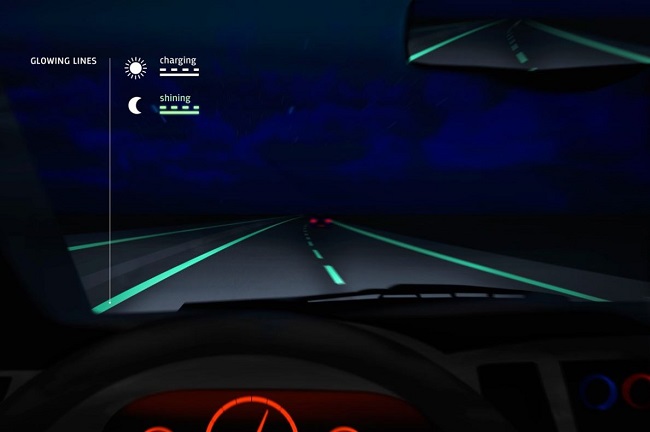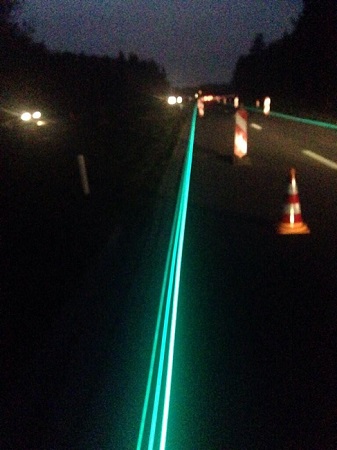
Driving through desolate European mountain highways or bleak American cornfields can leave one feeling uneasy if the only light source is their vehicle’s headlights. What if a terrible twist of fate robs you of working headlights? Pulling over and waiting for daybreak is inefficient and equally dangerous. The Dutch innovator, Studio Roosegaarde, has proposed a glow-in-the-dark road line solution from as far back as 2012. Two years later, they’ve finally received approval to test the technology across a 500m stretch of highway in the Netherlands.
“It looks like you are driving through a fairytale,” reports the Dutch news outlet One Netherlands. The paint is photo-luminescent and scantly reminiscent of the kind used in wristwatches; it was created using photo-luminescent powder incorporated in road paint. “It’s almost radioactive,” says studio founder and project lead, Daan Roosegaarde, in a tweet depicting three bands of light. The paint charges up during the hours of daylight and emits a steady green glow for eight hours during the course of the night.

Live captured image tweeted by Daan Roosegaarde
Future implementations
Roosegaarde envisions the final implementation of the project to include markings, such as snowflakes, that appear once certain conditions are met e.g., temperature. Such features seem a bit far-fetched in terms of glow-in-the-dark paint, but may be possible with embedded roadside sensors communicating weather conditions to digital dashboard displays. Until such hardware becomes the norm, the project is confined to the green glow spread across the 500 m of N329 highway in Oss.

Daan Roosegaarde refers to his vision as “Route 66 of the future.” He was inspired to take action after realizing the public’s apathy toward the condition of the roads built from their tax revenue.
Long conceived
Studio Roosegaarde communications partner Emina Sendijarevic said to Wired.co.uk: “Research on smart transportation systems and smart roads has existed for over 30 years — call any transportation and infrastructure specialist and you'll find out yourself. … What's lacking is the implementation of those innovations and making those innovations intuitive and valuable to the end-consumers — drivers.” The success of the N329 experiment will play a key role in selling this idea as a mitigator of road safety issues associated with the lack of lighting.
Benefits to reap.
Photo-luminescent paint is sustainable: it charges from daily exposure to sunlight and doesn’t require a power grid connection the way light posts do. This not only decreases light pollution and municipal power consumptions, but expands road-side lighting to remote regions that are disconnected from the power grid. By contrast, one unintended consequence that may originate from decreasing the number of street lights is pedestrian death.
Via Wired
Advertisement
Learn more about Electronic Products Magazine





